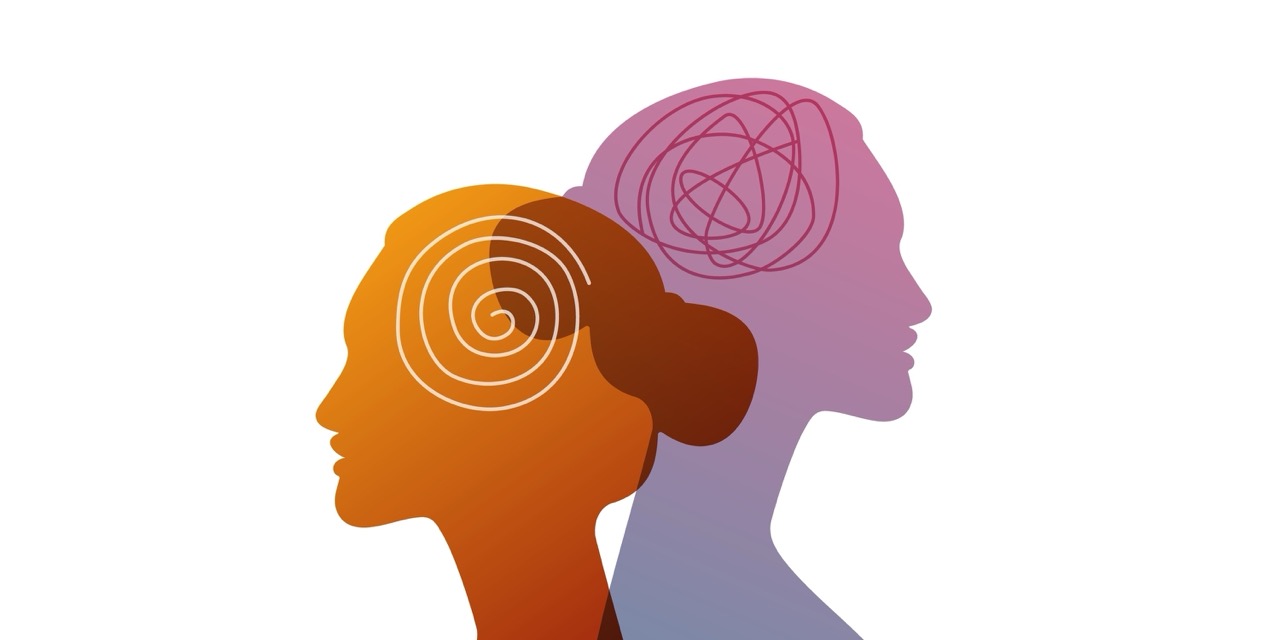Borderline Personality Disorder and Emotional Perception
Emotional perception plays an important role in human interaction, allowing us to understand others’ feelings and respond appropriately. However, research suggests that individuals with Borderline Personality Disorder (BPD) may struggle with accurately interpreting emotional expressions, particularly in facial cues. These misinterpretations can lead to emotional distress, dysregulated responses, and interpersonal challenges.

Challenges in Recognizing Emotions
Individuals with Borderline Personality Disorder (BPD) may experience challenges in accurately interpreting emotional expressions, particularly in facial cues. The ability to correctly read emotions plays a crucial role in social interactions, allowing for appropriate responses and producing empathy. When this ability is impaired, misunderstandings can arise, leading to emotional distress, inappropriate reactions, and strained relationships.
A review by Gregor Domes, published in the Guilford Press Periodicals, analyzed multiple studies on emotional perception in BPD. Their findings suggest that individuals with BPD are more likely to misinterpret neutral or ambiguous facial expressions as negative, particularly as anger or fear. This pattern may reflect a heightened expectation of conflict, making social interactions more stressful and reinforcing a perception of the world as hostile. [1] The tendency to assume negative intent where none exists can contribute to emotional dysregulation, further complicating relationships and daily interactions.
Emotional Dysregulation
People with Borderline Personality Disorder (BPD) often face significant challenges in regulating their emotions and maintaining stable relationships. These struggles are closely linked, creating a cycle that can be difficult to break. One of the defining traits of BPD is an intense fear of abandonment. This hypersensitivity to social cues can heighten emotional responses, leading to impulsive reactions such as anger outbursts. In turn, these emotional reactions can strain relationships, reinforcing feelings of instability and rejection. [2]
Research suggests that emotional dysregulation in BPD also affects cognitive processing, making it harder to accurately interpret and respond to social cues. This may explain why individuals with BPD often react more intensely to perceived rejection or criticism, even when no negative intent is present. Their heightened sensitivity can cause them to misinterpret neutral interactions as dismissive or hostile, further fueling emotional distress and interpersonal difficulties.
Examples of emotional dysregulation in BPD:
- Struggles with Emotional Recovery – After experiencing emotional distress, it may take significantly longer for someone with BPD to return to a baseline emotional state compared to others, prolonging tension in relationships and increasing overall stress.
- Escalating Conflicts Over Minor Issues – A small disagreement, such as a friend canceling plans, may trigger intense feelings of rejection, leading to an emotional outburst or impulsive decision to end the relationship.
- Rapid Mood Shifts – Someone with BPD might feel intense joy and connection with a loved one one moment, only to feel abandoned and enraged the next due to a perceived slight or change in tone.
- Impulsive Reactions to Emotional Distress – Feelings of sadness or anger may result in impulsive behaviors such as self-harm, reckless spending, or substance use as a way to cope with overwhelming emotions.
- Overinterpreting Neutral Expressions as Negative – A neutral facial expression from a coworker might be misperceived as disapproval or hostility, leading to withdrawal or confrontation.
How the Brain Processes Emotions in BPD
Neuroimaging studies offer valuable insights into how the brains of individuals with Borderline Personality Disorder (BPD) process emotions. Research indicates that people with BPD show heightened activity in the amygdala, the brain region responsible for processing fear and anger. This overactivity may explain their intensified emotional responses and difficulty in accurately interpreting others’ emotions. When the amygdala is highly reactive, even neutral or mildly negative social cues can feel overwhelming or threatening, leading to heightened emotional distress.
In addition, studies have identified abnormalities in the prefrontal cortex, the part of the brain responsible for regulating emotions and impulse control. [3] These differences show that individuals with BPD may have difficulty tempering emotional reactions, making them more likely to misperceive and overreact to social cues. With impaired regulation from the prefrontal cortex, emotional experiences can feel more intense and harder to manage, contributing to impulsive behavior and relationship instability.
BPD emotional reactivity takeaways:
- Cognitive Regulation Challenges – Dysfunction in the prefrontal cortex makes it harder to modulate emotional responses and assess situations accurately.
- Heightened Sensitivity – Neutral or ambiguous situations may be perceived as threatening or emotionally charged.
- Impulsive Reactions – Difficulty regulating emotions can lead to sudden outbursts, risky behaviors, or withdrawal.
- Slow Emotional Recovery – It often takes longer to return to a baseline emotional state after distress.
- Fear-Driven Responses – Overactivity in the amygdala can amplify fear and anxiety, even in non-threatening situations.
The Role of Bias in Emotion Recognition
One of the most well-documented findings in BPD research is a negative bias in emotion recognition. [4] People with BPD are more likely to interpret neutral or ambiguous facial expressions as negative, often perceiving anger or fear where none was intended. This tendency can have significant consequences, as misreading others’ emotions can lead to unnecessary conflict, heightened emotional distress, or even withdrawal from social interactions.
For instance, a person with BPD might interpret a friend’s neutral expression as disapproval or irritation. This misperception could trigger a defensive reaction, escalating the situation and creating tension where none originally existed. Over time, these repeated misinterpretations can strain relationships, reinforcing feelings of rejection and emotional instability.
Ways to improve emotion recognition:
- Use Perspective-Taking – Consider alternative explanations for facial expressions or social cues.4
- Pause Before Reacting – Take a moment to assess whether the perceived emotion aligns with the situation.
- Seek Clarification – When in doubt, ask the other person how they’re feeling instead of assuming.
Heightened Sensitivity to Emotional Cues
Interestingly, some research suggests that individuals with BPD may actually be more attuned to emotional expressions than those without the disorder, particularly when they are not experiencing emotional distress. [5]
A study by Eric Fertuck published by Cambridge University, found that people with BPD performed better at recognizing facial expressions than individuals without a personality disorder. However, this heightened sensitivity does not always lead to accurate interpretation. Instead, individuals with BPD may over-personalize emotions, assuming someone is angry at them when the person is merely mildly annoyed about something unrelated. This hyper-attunement can intensify emotional responses and create additional social difficulties.
Addressing Emotional Perception in Treatment
Understanding how individuals with BPD perceive and interpret emotions is essential for developing effective treatment strategies. Dialectical Behavior Therapy (DBT), one of the most widely used treatments for BPD, helps improve emotion regulation and reduce cognitive biases in recognizing emotions. By teaching skills such as distress tolerance and mindfulness, DBT enables individuals to better manage emotional reactions and navigate social interactions more effectively.
Therapies that focus on distinguishing between perceived and actual emotional cues can also improve social functioning. Mindfulness-based approaches, which encourage individuals to observe emotions without immediately reacting, have been shown to enhance emotional awareness and promote healthier responses in relationships. These techniques help individuals with BPD develop a more balanced perspective in interpreting others’ emotions, reducing the likelihood of misperceptions and emotional distress.
Strategies to Improve Emotional Interpretation in BPD:
- Work with a Therapist – Professional guidance can help reframe cognitive distortions and develop healthier communication patterns.
- Practice Mindfulness – Engage in exercises that promote awareness of emotions without impulsively reacting.
- Use DBT Skills – Learn distress tolerance and emotion regulation techniques to manage strong reactions.
- Seek Clarification in Conversations – Ask for confirmation before assuming someone’s emotional state.
- Engage in Perspective-Taking – Consider alternative explanations for social interactions rather than assuming the worst.
Improving Emotional Awareness in BPD
While individuals with BPD may have heightened sensitivity to emotional cues, this sensitivity often comes with biases that can distort their interpretation of others’ emotions. These misinterpretations can contribute to emotional dysregulation, impulsive reactions, and challenges in relationships.
Ongoing research continues to reveal the neurobiological and psychological mechanisms behind these patterns, paving the way for more effective treatments. By addressing these perceptual challenges through therapy, mindfulness, and emotional regulation strategies, individuals with BPD can develop a clearer understanding of emotions, build stronger relationships, and navigate social interactions with greater confidence and stability.
- Domes, Gregor, et al. “Recognition of Facial Affect in Borderline Personality Disorder.” Journal of Personality Disorders, vol. 22, no. 2, 2008, pp. 135–147. PubMed, https://pubmed.ncbi.nlm.nih.gov/18419234/. Accessed 10 Feb. 2025.
- Carpenter, Ryan W., and Timothy J. Trull. “Components of Emotion Dysregulation in Borderline Personality Disorder: A Review.” Personality Disorders: Theory, Research, and Treatment, vol. 4, no. 2, 2013, pp. 123–136. PubMed Central, https://pmc.ncbi.nlm.nih.gov/articles/PMC3973423/. Accessed 10 Feb. 2025.
- Kim, Soyoun, and Daeyeol Lee. “Prefrontal Cortex and Impulsive Decision Making.” Biological Psychiatry, vol. 69, no. 12, 2011, pp. 1140–1146. PubMed Central, https://pmc.ncbi.nlm.nih.gov/articles/PMC2991430/. Accessed 10 Feb. 2025.
- Fenske, Sabrina, et al. “Emotion Recognition in Borderline Personality Disorder: Effects of Emotional Information on Negative Bias.” Borderline Personality Disorder and Emotion Dysregulation, vol. 2, 2015, Article 10. BioMed Central, https://bpded.biomedcentral.com/articles/10.1186/s40479-015-0031-z. Accessed 10 Feb. 2025.
- Dixon-Gordon, Katherine L., et al. “Emotional Processes in Borderline Personality Disorder: An Update for Clinical Practice.” Harvard Review of Psychiatry, vol. 26, no. 3, 2018, pp. 133–147. PubMed Central, https://pmc.ncbi.nlm.nih.gov/articles/PMC5842953/. Accessed 10 Feb. 2025.
Our Medical Affairs Team is a dedicated group of medical professionals with diverse and extensive clinical experience who actively contribute to the development of our content, products, and services. They meticulously evaluate and review all medical content before publication to ensure it is medically accurate and aligned with current discussions and research developments in mental health. For more information, visit our Editorial Policy.
MentalHealth.com is a health technology company guiding people towards self-understanding and connection. The platform provides reliable resources, accessible services, and nurturing communities. Its purpose is to educate, support, and empower people in their pursuit of well-being.
Dr. Simone Hoermann, Ph.D., is a NYC-based psychologist specializing in personality disorders, anxiety, and depression. With over 15 years in private practice and experience at Columbia University Medical Center, she helps clients navigate stress, relationships, and life transitions through evidence-based therapy.
Dr. Jesse Hanson is a somatic psychologist with a PhD in Clinical Psychology and 20+ years of neuropsychology experience.
Our Medical Affairs Team is a dedicated group of medical professionals with diverse and extensive clinical experience who actively contribute to the development of our content, products, and services. They meticulously evaluate and review all medical content before publication to ensure it is medically accurate and aligned with current discussions and research developments in mental health. For more information, visit our Editorial Policy.
MentalHealth.com is a health technology company guiding people towards self-understanding and connection. The platform provides reliable resources, accessible services, and nurturing communities. Its purpose is to educate, support, and empower people in their pursuit of well-being.


